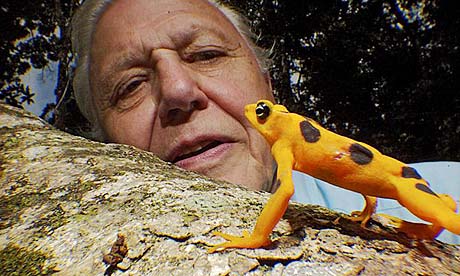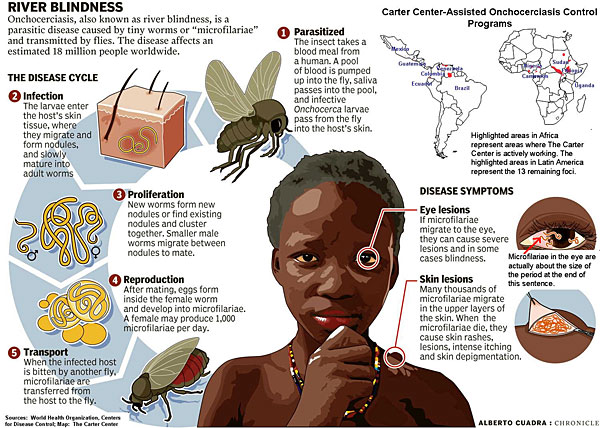 In a recent interview for the Radio times, the great David Attenborough discussed his opposition to creationism and was asked why he didn't give "credit" to God for the design of living things. He replied:
In a recent interview for the Radio times, the great David Attenborough discussed his opposition to creationism and was asked why he didn't give "credit" to God for the design of living things. He replied:"They always mean beautiful things like hummingbirds. I always reply by saying that I think of a little child in east Africa with a worm burrowing through his eyeball. The worm cannot live in any other way, except by burrowing through eyeballs. I find that hard to reconcile with the notion of a divine and benevolent creator."
I'm not putting that quote up to get drawn into a discussion of what that implies for the existence or otherwise of a benevolent creator (if pressed I'd say there's been a lot of arrogance and intransience on both sides of the debate and I'd like to leave it at that*) but because, quite understandably, a lot of people have now heard of this blinding disease spread by flies and think it's what I'm working on, when in fact I'm working on an entirely different blinding disease spread by completely different flies. Confused yet?
The disease David Attenborough is referring to is Onchocerciasis or River Blindness, caused by parasitic worms spread by blackfly of the family Simuliidae. These blackflies are found close to running water as the larvae feed by anchoring themselves to stream beds and then straining food out of the passing currents with little fans. The female flies feed on human blood and are able to pierce human skin to get it. In doing so they are able to pick up baby worms (microfilariae) living under the skin. The worms then penetrate the gut wall and migrate to the flight muscles where they mature into juveniles, then travel to the poor fly's proboscis (they don't do the fly much good either incidentally) where they mature again into infectious juveniles and are able to enter the human body in saliva the next time the fly takes a meal. They then set up home in the subcutaneous tissue where they become adults and start churning out more microfilariae. This may all sound a bit complicated but the take-home message is that both humans and flies are needed for the worm to complete its lifecycle. It is the microfilariae that cause all the problems, provoking strong immune reactions especially when they die. In the skin this can produce irritating or painful dermatitis, but if the worms migrate into the cornea they can cause blindness.
As you should all know by now, because I've been banging on about in incessantly for the past six months, the disease I'm working on is called Trachoma. It's spread by Musca sorbens, which nasty as it is is not actually able to pierce skin to drink blood but instead laps secretions off the skin, most commonly tears. Unlike River Blindness which is most prevalent near the running water its blackfly vectors need (the clue is in the name!) Trachoma is most prevalent in dry, dusty places where people don't have water to spare to wash their faces. The disease is caused by a bacterium not a worm, and it infects the inside of the eyelid not the cornea – the damage to the cornea is caused indirectly by scratching from the inturned eyelashes. And unlike the worm that caused River Blindness, the bacterium that causes Trachoma doesn't need the fly to complete its lifecycle; whilst flies are a very efficient menas of dispering the bacterium, it could equally well be transmitted by dirty fingers or towels. The worm couldn't, as few towels have either flight muscles or probosces.
Hope that's cleared things up. Here are some nice pictures of nasty things from the Carter Centre:


*If pressed really hard, with pointy things, I'd say that there may or may not be a God but it'd be more productive if we all stopped bickering about it and got on with doing what God wants us to do/doing what we have to do because there is no loving guiding force, which is making the world a better place. And that really is the end of what I have to say on the matter.
No comments:
Post a Comment